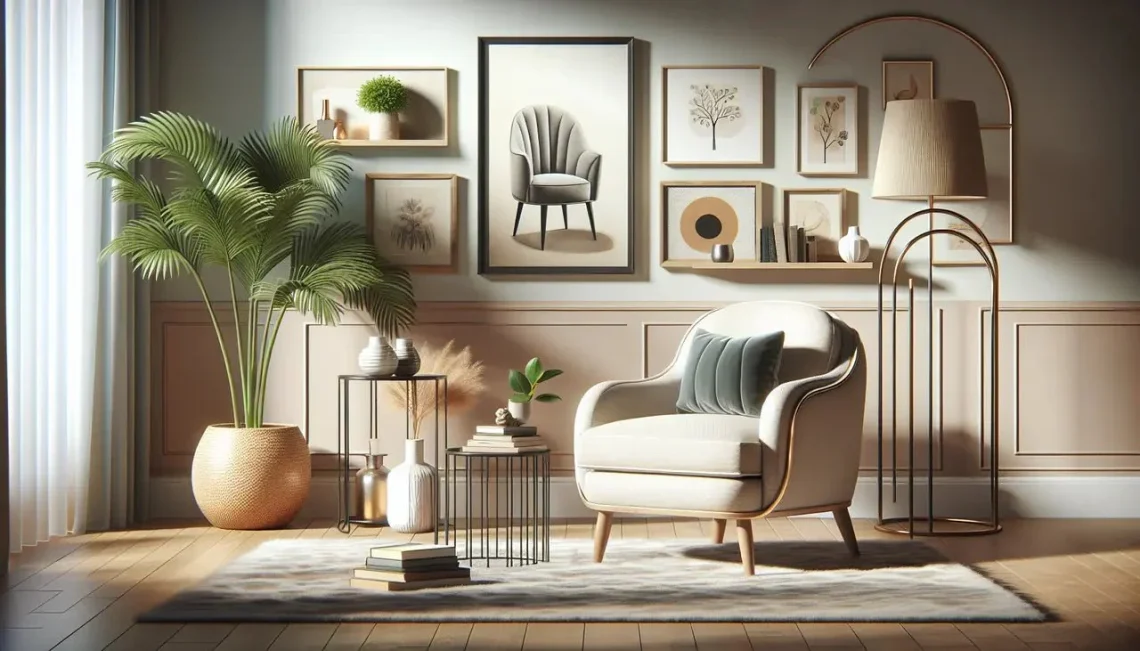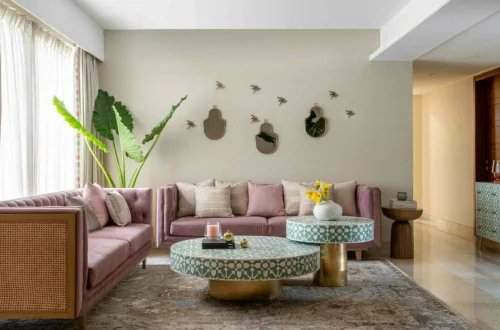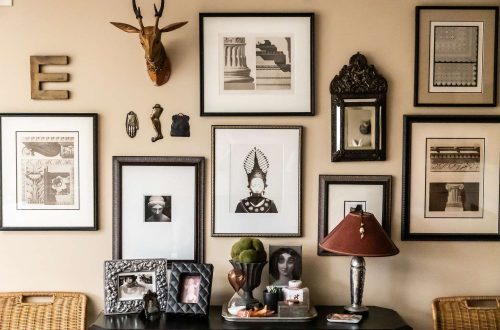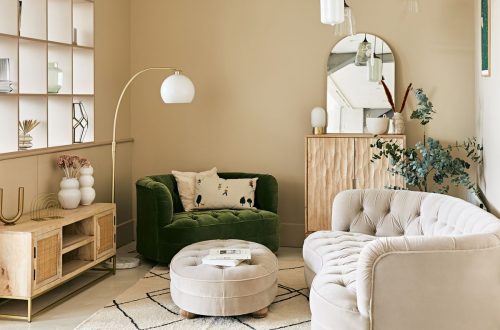An accent chair is often described as a room’s jewelry – a carefully chosen piece that adds a pop of personality, color, or form that elevates the entire design aesthetic. Unlike primary seating pieces that serve purely functional purposes, accent chairs have the unique ability to make a bold design statement while providing additional seating. The perfect accent chair can transform a room from ordinary to extraordinary, serving as both a functional element and a focal point. However, with so many styles, sizes, and comfort considerations to navigate, choosing the right accent chair can feel overwhelming. This comprehensive guide will walk you through every aspect of selecting the perfect accent chair, from matching your existing decor to ensuring it meets both aesthetic and functional requirements.
Part 1: Match the Style
The first and most crucial step in selecting an accent chair is ensuring it complements your existing design aesthetic. The chair should feel like it belongs in your space while providing enough visual interest to serve as an accent piece.
Mid-Century Modern Armchair:
Characterized by clean lines, organic curves, and tapered legs. These chairs often feature wood elements and come in a variety of upholstery options. They work beautifully in spaces with mid-century furnishings or can provide a retro accent in more contemporary rooms.
Classic Wingback Chair:
Featuring sides that “wing” out around the head and shoulders, wingbacks provide both visual presence and functional comfort. They’re ideal for reading and create a sense of privacy while seated. These work well in traditional, transitional, or even contemporary rooms where they can serve as an interesting contrast piece.
Armless Slipper Chair:
These low-profile, upholstered chairs have a sleek, streamlined appearance. They’re perfect for smaller spaces and work well in both traditional and modern settings. Their compact size makes them ideal for placement in front of a vanity, beside a bed, or in tight spaces where a full chair might overwhelm.
Style Tip: Don’t feel constrained to match your accent chair exactly to your existing furniture style. Sometimes a well-chosen contrasting style can add visual interest and prevent your room from feeling too matchy-matchy. A modern chair can work beautifully in a traditional room as a contemporary accent.
Additional Style Considerations:
Scandinavian: Emphasizes functionality with clean lines and minimal ornamentation. Often features light woods and neutral colors that create a cozy yet minimalist aesthetic.
Industrial: Characterized by metal frames, exposed hardware, and utilitarian design. These chairs work well in loft-style spaces or rooms with an urban aesthetic.
Bohemian: Features rich textures, bold patterns, and global influences. Think tasseled details, ethnic prints, and a relaxed, collected-over-time appearance.
Part 2: Get the Scale Right
Scale is often the most challenging aspect of selecting an accent chair, yet it’s one of the most important factors in achieving a balanced, harmonious room. The size of your accent chair in relation to other furniture pieces will dramatically impact how comfortable and aesthetically pleasing your space feels.
Proportion Rule: An accent chair should be proportional to the sofa and other furniture in the room. A large, bulky accent chair will be overwhelmed by a substantial sectional, while a delicate chair will look lost beside a large, traditional sofa.
Measuring and Assessing Scale:
Consider the visual weight of your existing furniture. If you have substantial, large-scale pieces, choose an accent chair with enough presence to balance the room. Conversely, if your furniture has a lighter, more delicate appearance, choose an accent chair that won’t overpower the space.
Height is crucial – measure from the floor to the top of your sofa’s back and try to keep your accent chair within a few inches of that height. This creates visual balance and makes the seating arrangement feel cohesive.
Space Considerations:
In smaller rooms, choose accent chairs with exposed legs that allow sight lines to flow underneath, making the space feel larger. Avoid large, bulky chairs that will compete for visual space in a small area.
Consider the chair’s footprint – the actual space it takes up on the floor. Even if a chair looks right next to your sofa, ensure you have enough clearance to walk around it comfortably and that it doesn’t block pathways through the room.
Vertical Space:
Don’t forget to consider how the chair will look in the vertical plane. A tall chair might compete with tall windows or artwork, while a low-profile chair might look lost in a room with high ceilings. Consider the ceiling height when selecting your accent chair.
Part 3: Consider the Function
Before falling in love with the aesthetic appeal of an accent chair, it’s essential to consider how it will actually be used. The intended function of your accent chair should guide your selection process and ensure you end up with a piece that’s both beautiful and practical.
Cozy Reading Chair:
If you plan to use your accent chair primarily for reading, prioritize comfort and support. Look for chairs with good lumbar support, appropriate arm height for holding a book, and a size that allows you to curl up comfortably.
Consider the lighting in the area where you’ll place the chair. Reading chairs should have access to appropriate task lighting, either from a nearby floor lamp or a chair with an integrated reading light.
Comfort First: When function is the priority, sit in the chair before purchasing if possible. Spend at least 10-15 minutes in the chair to ensure it provides adequate support for extended sitting.
Occasional Seat:
If the chair is primarily decorative and will rarely be used, you have more flexibility with comfort considerations. This allows you to prioritize style over comfort and potentially choose more sculptural or visually interesting options.
However, even occasional seating should be comfortable enough for unexpected guests. Consider chairs that are attractive but still functional for the occasional sitter.
Guest Consideration: Even if you don’t plan to use the chair yourself, consider how comfortable it will be for guests. An uncomfortable chair can become an awkward conversation piece rather than a functional accent.
Part 4: Fabric and Color
The fabric and color of your accent chair is where you can really make a design impact. This is your opportunity to introduce a bold color, interesting pattern, or luxurious texture that will become a focal point in your room.
Color Selection Strategies:
Your accent chair can serve as a jumping-off point for your room’s color palette. Choose a color that appears in smaller doses throughout the room in throw pillows, artwork, or accessories to create visual cohesion.
Alternatively, select a complementary color that creates a pleasing contrast with your existing palette. This approach works particularly well when you want to add energy or visual interest to a neutral room.
Fabric Options and Considerations:
- Velvet: Luxurious and sophisticated, velvet adds richness to any room. However, it’s more delicate and shows wear more easily than other fabrics.
- Leather: Durable and timeless, leather develops a beautiful patina over time. It’s also easy to clean and maintain, making it ideal for high-traffic areas.
- Performance Fabrics: These are specially treated to resist stains, fading, and wear. They’re ideal for homes with children or pets but come in a wide range of colors and textures.
- Natural Fibers: Linen and cotton offer a relaxed, organic feel but may not be as durable as synthetic options.
Pattern Play:
Patterns can add visual interest and complexity to your space. Small-scale patterns work well in smaller rooms and are less overwhelming, while large-scale patterns can make a bold statement in larger spaces.
When using patterned upholstery, consider the other patterns in your room. If you have patterned curtains or an area rug, choose a solid-colored accent chair or one with a pattern that uses colors from your existing patterns.
Placement and Positioning
Even the most beautiful accent chair will fail to achieve its potential if it’s not positioned correctly in the room. The placement of your accent chair affects both its functionality and its visual impact.
Creating Conversation Areas:
Place your accent chair to encourage conversation. This often means positioning it at an angle to your sofa, with the two pieces facing each other. The goal is to create an intimate conversation area where people can easily see and talk to each other.
Consider the room’s traffic flow when positioning your chair. Ensure that people can move around it easily without disrupting the conversation area.
Visual Balance: If you’re using a bold, colorful accent chair, consider placing it near another element in the room that picks up the same color, even if it’s just a small accessory. This creates visual balance and prevents the chair from feeling like an isolated element.
Creating Focal Points:
Position your accent chair to draw attention to beautiful views, artwork, or architectural features. Sometimes the act of sitting in the chair and looking at something beautiful is the chair’s primary function.
Alternatively, place the chair in a position where it will be easily seen and appreciated as a design element, such as facing into the room from an entryway.
Budget Considerations and Value
Accent chairs can range from very affordable to extremely expensive, so establishing a budget early in your search will help narrow your options and ensure you make a purchase that aligns with your financial goals.
Investment vs. Disposable Pieces:
Consider how often you’ll use the chair when determining your budget. If it’s primarily decorative, you might not need to invest as much as you would in a chair that will see daily use.
However, remember that quality construction often means longer-lasting furniture. A well-made chair may cost more upfront but provide better value over time through durability and timeless design.
Budget-Friendly Strategies:
- Consider the Frame: If you find a chair with great lines but an outdated fabric, consider reupholstering it with a fabric you love.
- Shop Secondhand: Quality vintage or gently used chairs can often be found at a fraction of the cost of new pieces.
- Off-Season Shopping: Decorative furniture often goes on sale during off-seasons, allowing you to get better value.
- Focus on Key Elements: Invest in a quality frame but choose simpler upholstery that you can update more easily.
Quality Indicators:
Look for construction details that indicate quality and durability. These include kiln-dried wood frames, reinforced joinery, high-density foam cushions, and tight, even upholstery. These details often justify higher prices but result in furniture that lasts longer.
Maintenance and Care
Proper care and maintenance will ensure your accent chair remains beautiful and functional for years to come. Different materials require different maintenance approaches, so consider this when making your selection.
Upholstery Care:
Vacuum upholstered chairs regularly with an upholstery attachment to prevent dirt and debris from settling into the fabric. Address spills immediately by blotting (not rubbing) with a clean, damp cloth.
For leather chairs, use appropriate leather cleaners and conditioners periodically to maintain the material’s suppleness and prevent cracking.
Professional Cleaning: Consider professional cleaning for valuable or delicate upholstery every 1-2 years to maintain appearance and extend the life of the fabric.
Structural Maintenance:
Periodically check that all hardware is tight and that the frame remains solid. Most accent chairs require minimal structural maintenance, but if you notice any looseness or squeaking, address it promptly to prevent further wear.
Troubleshooting Common Accent Chair Issues
Even with careful selection, you might encounter challenges with your accent chair. Understanding common problems and their solutions will help ensure your investment remains successful.
Problem: Chair Feels Out of Place
Solution: Consider repositioning the chair or adjusting the surrounding accessories. Sometimes a chair needs time to “settle” into a space, but if it continues to feel wrong, it may be the wrong scale or style for your room.
Problem: Chair Shows Wear Quickly
Solution: Consider the chair’s placement. Direct sunlight, high-traffic areas, or placement near heat sources can accelerate wear. Also, evaluate if the fabric choice was appropriate for the intended use.
Comfort Issues: If a chair proves uncomfortable despite looking great, consider adding accessories like a lumbar support cushion or throw pillow to improve comfort without changing the chair itself.
Conclusion
Choosing the perfect accent chair is a delightful combination of art and science – balancing aesthetic appeal with practical considerations. The right accent chair will serve as both a functional piece and a beautiful design element that enhances your entire room.
Remember to approach the selection process systematically: first consider how the chair will fit with your existing style, then ensure proper scale and proportion, followed by evaluating the functional requirements, and finally selecting the appropriate fabric and color to complete the look.
The investment in a well-chosen accent chair pays dividends in the form of a more beautiful, functional, and personalized living space. Whether you choose a bold, colorful piece to serve as a focal point or a more subtle design that complements your existing furniture, the key is to select a chair that brings you joy every time you see it.
Trust your instincts, but also consider the practical aspects. The perfect accent chair is one that makes you smile when you see it and offers the right balance of beauty, comfort, and function for your specific needs and lifestyle.





